 |
 |
Current position:Little Reporters > Interview the Sacrificial Site > Ancestral Spirits House |
--- Little Reporters --- |
| Interview the Personage |
| Interview the Sacrificial Site |
| Interview the Sacrificial Site |
| |Ancestral Spirits House| | |Location of Five-Year Fiesta| | |Spiritual Fortress| |
Ancestral Spirits House |
||||
There are two ancestral spirits houses in Kuljaljau Village . The oldest one (cinekecekan) is situated at the corner of ZhongShan Rd. It is used mainly for millet fiesta, harvest fiesta, and is also a place to select priest for Five-Year Fiesta. Later when the village population increases, a Hunting ancestral spirits house (rusivawan) is built on ZhongZheng Rd. Thanks to Vuvu Camak Parigure's introduction, we have a better understanding about ancestral spirits house after the interview. Following is the introduction of these two houses: |
||||
Date: 2007/1/8 Location: Marker of ancestral spirits house (cinekecekan); Hunting ancestral spirits house (rusivawan) Interviewee: Vuvu Camak Parigure Participants: Goblin's Aspirational Team, Teacher Su-chu Chou, Teacher Hui-ling Su, National Pingtung University volunteer teachers Content of Interview: |
||||
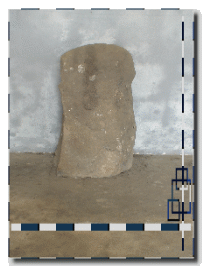 |
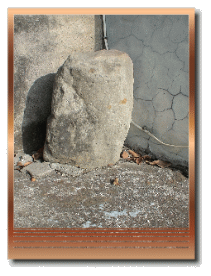 |
|||
This stone lies in the marker of ancestral spirits house (cinekecekan). It was brought by ancestor from early days of Kuljaljauto represent ancestral spirits. It is worshiped in sacrificial ceremony.
|
This stone is situated at the outside of marker of ancestral spirits house (cinekecekan). It has existed since ancestor moved cinekecekan here to represent god of this land. It is honored in the meantime when the ancestral spirits inside the house are worshiped.
|
|||
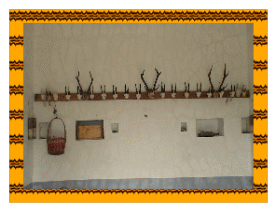 |
There are four shrine holes on the front wall inside the house. Two holes in the middle are to represent chief's home and the civilian home who is in charge of the house. The sacrificial items which are offered to qumauan by the high priest are stored in the shrine at higher position. A bamboo tube box (kakiyavangan) which has male attribute is hung at the left corner of the front wall to store sacrificial items for calling the ancestral spirits. The box on the right which has female attribute is to store sacrificial items for harvest fiesta and crop seeds. Small shrine holes (cagalj) on left side of the wall are the place to offer sacrificial items when giving birth to a boy; holes on right when giving birth to a girl. |
|||
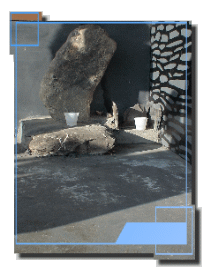 |
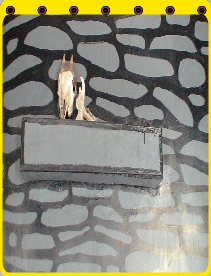 |
|||
Tjagaraus's spiritual seat: Situated at the outside of Hunting ancestral spirits house (rusivawan), it is the founder of tribal priest. Ordinary rice wine can not be used in ceremony. Only millet liquor made by the clansmen is allowed in the sacrificial ceremony. |
Only the animal bones Hunted from Five-Year Fiesta are allowed to place in Hunting ancestral spirits house (rusivawan). |
|||
 |
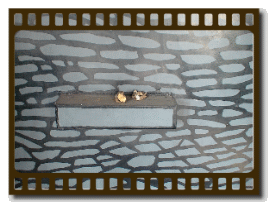 |
|||
There are two shrine holes in Hunting ancestral spirits house. Hole on right is for a try to place enemy's head, and on the left a try for other sacrificial items. |
In old times, the pig bone was put on the rooftop by the priest; nowadays, it was put outside of Hunting ancestral spirits house (rusivawan), instead. |
|||
Source: Paiwan Tribe - Picture Book of KuljaljauVillage Image: Integral Planning of Ecotourism Industry Development, Laiyi Township Pingtung County Edited by: Hui-hsin Gao, Yi-de Chou |
||||
Planned by volunteer teachers at Kuljaljau Elementary School, Laiyi Township Pingtung County, Year 2007; Made by Goblin’s Aspirational Team.
To view the contents on this website, a computer monitor with 1024x768 dpi and an Internet browser of Microsoft Internet Explorer 5.5 or above is recommended.